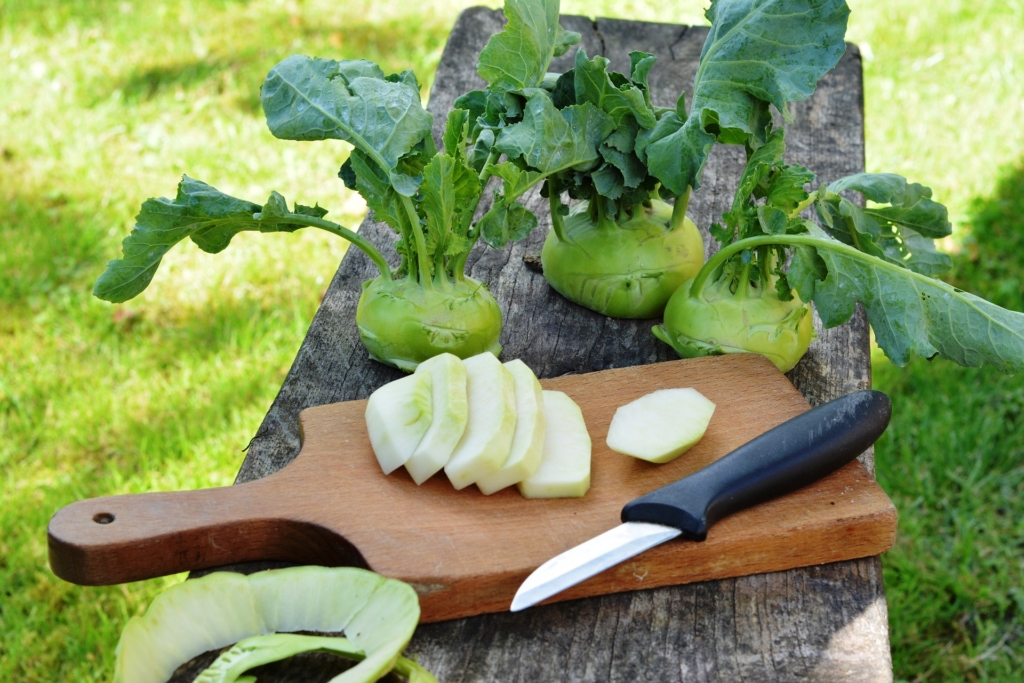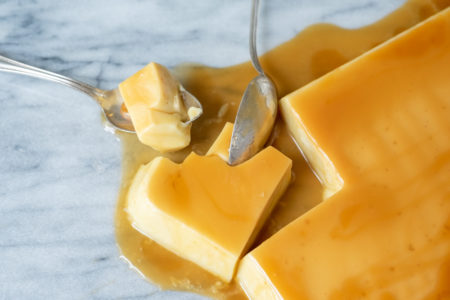This cruciferous vegetable, also referred to as a German turnip, is popular in Northern and Eastern Europe and is technically part of the cabbage family. Known as a biennial plant, the kohlrabi completes the seed to flower life cycle every two years. When fully grown, this interesting looking vegetable can range in size, but generally consists of a pale green or purple bulb with long thin leaves that grow upwards.
Flavor and Texture
Similar to a radish, kohlrabi can have a peppery kick. And as for texture, the vegetable is often compared to peeled broccoli stems. Smaller bulbs tend to be more mild when it comes to spiciness, whereas larger bulbs can pack more of a punch. The leaves of the kohlrabi can be eaten as well and also act as a good indicator of freshness. When picking up your own kohlrabi at the grocery store, search for a plant with a firm bulb and crisp leaves that are still attached. The skin of the vegetable can be tough and fibrous so peeling is encouraged before cooking.
Uses

This hearty vegetable can be put to use in the kitchen in a wide variety of ways. Thinly slice the bulb and mix it into a salad for a refreshing crunch or try cutting it into matchsticks for dipping in hummus. This versatile vegetable can be boiled and mashed, roasted, or even hollowed out and stuffed. When it comes to the leaves, they can be sauteed like other more familiar green leafy vegetables or eaten raw in a salad. Look for kohlrabi at your local farmer’s market or grocery store from autumn into winter. Kohlrabi have a long shelf life thanks to their thick skin and can be stored for weeks in the refrigerator.



